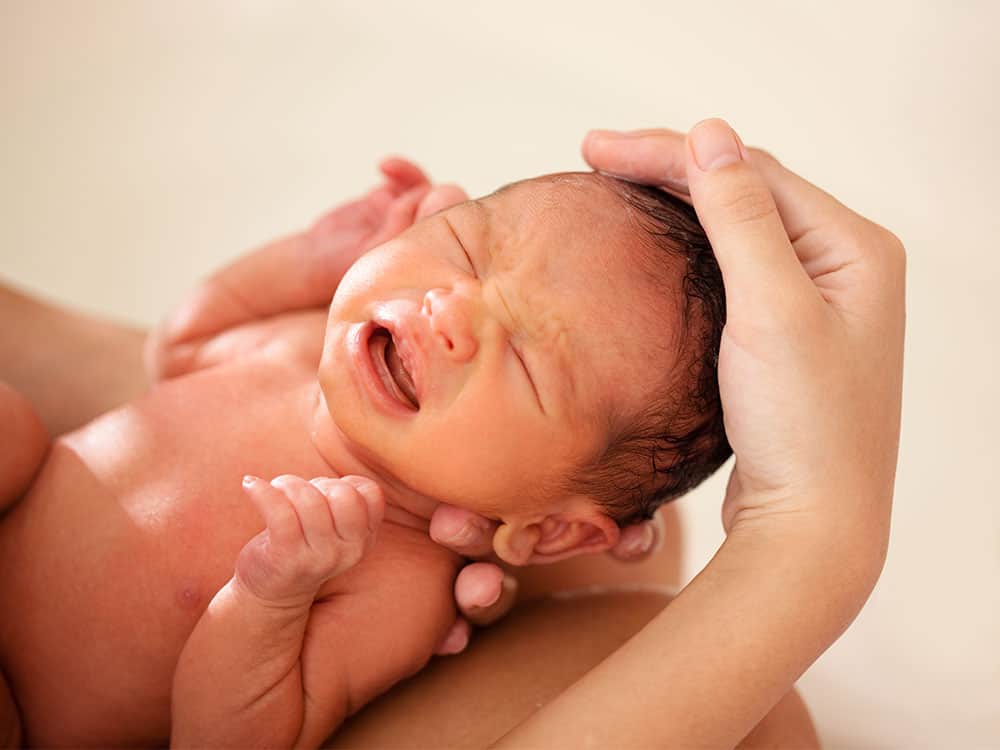
Table of Contents
You may start wondering how to bathe a baby and include bath time into your baby’s routine soon after birth.
Some physicians advise waiting until a newborn is a little older, before giving them their first bath. Because your baby has a vernix cover on their skin. It is a waxy coating that shields your infant from pathogens present in the environment, after delivery.
If you give birth to your baby in a hospital, the blood and the amniotic fluid will be cleaned off by hospital
nurses or personnel after your child is born. However, you will most likely have the choice of telling them to leave any extra vernix.
You can bathe your infant with a sponge wash after you get them home. You can wash their face, body, and the diaper region to clean them. Until your baby’s umbilical cord breaks off, this is a safe way to wash them.
You can start washing your newborn by immersing the baby in a small bath once the cord has fallen off on
it’s own.
Continue reading to discover how to bathe a baby and other bath-related information.
How to give a sponge bath to a baby?
For the 1st few weeks of life, your infant should be washed in a sponge bath. Before the umbilical cord breaks off, this is the easiest way to clean your newborn.
While the circumcision site heals, sponge showers are considered best when it comes to bathing circumcised males. A sponge bath is good if you wish to clean one or more body parts of the baby without wetting them. Ensure that all the items you’ll need before giving your infant a sponge wash. To keep your infant comfy, you’ll want to warm the environment up.
Once you’ve acquired your materials, proceed as follows:
- Take your baby’s clothing and diaper off, cover the baby in a towel. The environment should be warm enough, about 75°F (23.8°C).
- Place your infant on a level surface. On the changing table, floor, sink counter, or the bed. If your baby is above the ground, always place your hand on them or use a safety strap to protect them from falling.
- Remove the towel, exposing only the body portion you’re cleaning.
- Begin with your baby’s face and head by dipping a clean towel in warm water. To stop from soap going into your baby’s eye or mouth, only use warm water without soap for this stage. Wipe the head, the ears, the chin, the folds of the neck, and the eyes.
- Dissolve a few drops of soap in the moderately hot water. Bring out the washcloth after dipping it in soapy water.
- Clean the remainder of the body with soapy water. You should clean the underarms and the genital region. If your infant has been circumcised, avoid washing the penis to keep the part dry unless your kid’s doctor says.
- Dry your infant thoroughly, especially within the creases of his or her skin. Replace the dirty diaper with a new one. You may also keep their head warm as they dry off by using a towel with a built-in hood.
How to bathe a baby in a bathtub?
You can wash your kid in a baby bathtub once the umbilical cord has fallen off. To wash your infant safely, follow these steps:
- Pour a little water into the tub. About 3 inches of water is usually enough. Depending on the model, you can place the tub inside the sink or a normal bathtub.
- As soon as you have undressed your infant, immediately immerse them in water to prevent them from becoming chilly.
- Support your baby’s head with one hand while placing their feet first in the tub with the other. For safety, their neck and head should always remain above water.
- To keep your infant warm in the tub, pour warm water over the baby.
- Clean their hair and face with a washcloth once or twice a week, and shampoo the scalp once or twice a week.
- Using warm water or a damp washcloth washes the remainder of their body from top to bottom.
- Carefully take the baby out of the water and dry them using a towel. Make sure to dry their skin wrinkles as well. Never, ever leave your baby in the tub unattended, not even for a jiffy. Even in shallow waters, they can drown fast.
Should you give your kid a sink bath or a full bath?
To bathe a newborn, sink inserts are available. This is a fantastic choice if you’re traveling or have limited room at home. Bath your infant in the sink by following the procedures above, but make sure the water coming from the sink faucet isn’t too hot.
You can utilize the whole bathtub after your kid is ready to sit on its own (typically when the baby is 6 months). The tub should only be filled halfway with water and keep an eye on your baby at all times, ensuring that their neck and head remain high above the water.
Do you require any soap?
When washing your infant, you can use mild baby soap or baby wash. Regular soap is not recommended since it is too abrasive and might dry up your baby’s sensitive skin. Moisturizer is also unnecessary for your newborn’s skin.
How to wash the scalp and hair of a newborn?
Wash your baby’s scalp or hair at least twice a week. Gently massage a baby shampoo into your baby’s hair, if they have any, or straight into their scalp to wash their scalp or hair. Dab it with a damp towel to remove it.
You may also tip your baby’s head back gently and keep one hand on the forehead while pouring warm water into a baby tub. To rinse away the shampoo, the water flows on either side of the head.
Washing your baby’s hair gently will not harm the soft spot, but you can always consult your pediatrician. Brush your baby’s scalp and hair carefully if he or she has a cradle cap. However, avoid picking or scraping their scalp.
What temperature should the water be?
The water temperature should be warm, not hot while bathing your infant. The optimum temperature is 98.6 degrees Fahrenheit (between 37 and 38 degrees Celsius). To check the temperature, use a bath thermometer or feel the water with your wrist or elbow to make sure it’s warm, not hot.
Also, make sure the baby bath or the tub has no hot patches on the sides. If you’re filling a basin or tub, start with cold water and then hot water.
How often should a baby be bathed?
In the first year of life, your infant may only require three baths each week. If you clean the diaper region thoroughly every time you change the diaper, this is sufficient. Bathing your infant once or twice a day is OK, but bathing him or her more often than that might dry up his or her skin. This is especially true if you’re using soap or another type of baby wash.
Final Conclusion
While showering, keep an eye on your infant. Don’t leave the baby unsupervised near water. If your baby screams or doesn’t like bathing, make the room warm enough, and the water isn’t very hot, and you’re keeping the baby warm by wrapping in a towel (while sponge bath). You may wash your infant in the big bathtub after he or she can sit up on their own. Bath toys or books can help the baby enjoy bath time, but be cautious with bubbles, since they can dry out a baby’s skin if used frequently.





